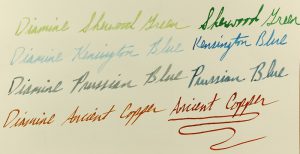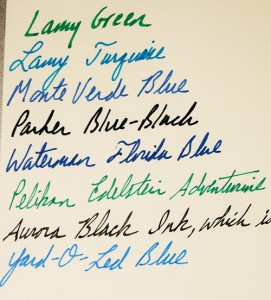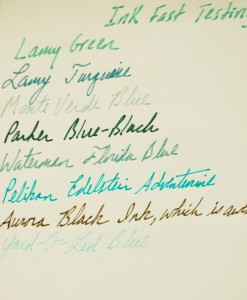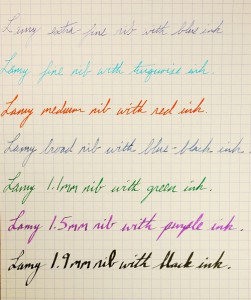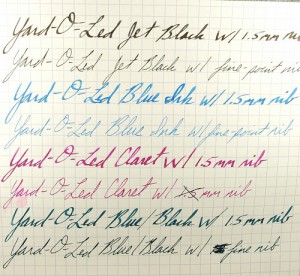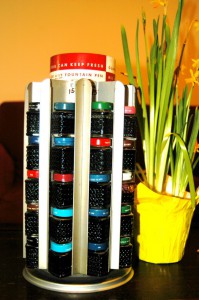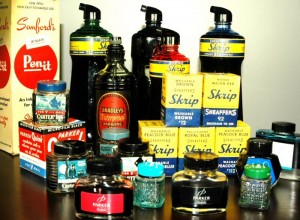Attracted by the many colors and properties of Noodler’s Inks, I just had to start exploring.
Finding the right orange ink for me became an obsession last winter. Loving the color samples online for Apache Sunset and Habanero, they were the first in my cart.
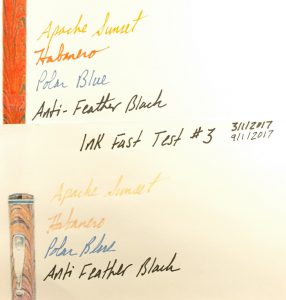
The top portion of this photo showcases fresh writing with Noodler’s Apache Sunset, Habanero, Polar Blue and Anti-Feather Black inks. The bottom of this photo shows how much or little they faded after being exposed to 6 months of summer sunlight.
Noodler’s Apache Sunset looked much darker in the online sample. In real life it was more of a running Pumpkin-Gut yellow-orange. It doesn’t offer much by way of shadowing effects unless you use a really wet nib or more preferably a wet, wide stub nib. In the six months it was posted in my sunniest window, it faded the most heavily, which really wasn’t surprising.
Friends know me quite well for my obsession with fiery hot tacos (My buddy Adam and I invented the notorious Flaming Hot Orgasmic Tacos from Hell while in college.), and I could not pass up a Noodler’s Habanero ink. This one looks spectacular and is the darkness that I thought Apache Sunset would be. It became my favorite of my 4 new Noodler’s inks. Unfortunately, its blazing color doesn’t hold up well to the blazing fury of the summer sun. As much as I love the color, I have noticed it is rather viscous. Generally, I have to thoroughly flush my pen every time between fillings of the Habanero ink. If I don’t, the pen gets too clogged up to write by the time I am half way through the second fill.
Since beginning these ink fast tests, I’ve been desperately looking for inks that won’t fade heavily with time or light. Noodler’s Bullet Proof inks are perfect for archival writing. Six months in the summer sun did little to diminish the strength of Noodler’s “Polar Blue” and “Anti-Feather Black.” These inks are promised to be UV resistant, water resistant, chemical uneraseable and many other incredible features. Our tests proved that out. When we soaked one sample in water, the paper disintegrated more than the ink.
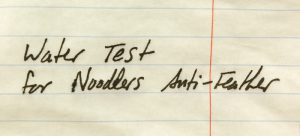
Noodler’s Anti-Feather Black ink only gets a smidge fuzzy after being soaked in water. It holds its properties incredibly well in sunlight and under water…once it has been let dry, that is.
Yet, there is a cost to these inks as well. They clogged the living daylights out of two juicy writing pens. It was a matter of time more than of use. If I were to fill a pen with Anti-Feather Black and write it to empty in one day, there’d have been little problem. If I wrote out half of the ink in one day and then waited a week to use it again, then problems developed. Ink would dry out on the ink feed and start gumming up the works fairly quickly.
As much as I love the deep, rich black of the Anti-Feather, along with its archival qualities, I only reserve it for special occasions, using only a glass dip nib. The Polar Blue was so frustrating, I gave it away to a friend who wanted to try it.


 Shopping Cart
Shopping Cart




